

Located at the foot of Tianshou Mountain in Beijing's
Changping District, the Imperial Ming Mausoleum is a complex of tombs for 13
emperors of the Ming Dynasty (1368-1644), with a total area of about 80 square
kilometers. It is about 50 kilometers from Beijing. Construction
of the Imperial Ming Mausoleums began in 1409 and was completed more than 200
years later when the Ming Dynasty collapsed in 1644. There are thirteen imperial
mausoleums, seven tombs for Imperial concubines and one for an eunuch.
Built in
the seventh year of Yongle Ming Dynasty (1409), the ChangLing of Zhu Di, emperor
ChengZu, is the first structure in the mausoleum area. It is located before the
main peak of the Tian Shou Shan. Eleven other mausoleums built in the Ming
Dynasty, such as XIAN, JING, YU, MAO, TAl, KANG, YONG , ZHAO, DING, QING and DE
are found in the mountain on the two sides of the ChangLing.
Located at the southwestern corner of the mausoleum area, the siling of emperor Chong Zhen ( ZHU YOUJIAN) is the last of the mausoleums. The tomb of an imperial concubine was transformed and made use of for this purpose. The name of the siling was agreed on in the first year of emperor SHUN ZHI (1644) of the Qing Dynasty and surface building were added then.
The
Imperial Ming Mausoleum, grandiose in architecture, well integrated and
time-honored, is the
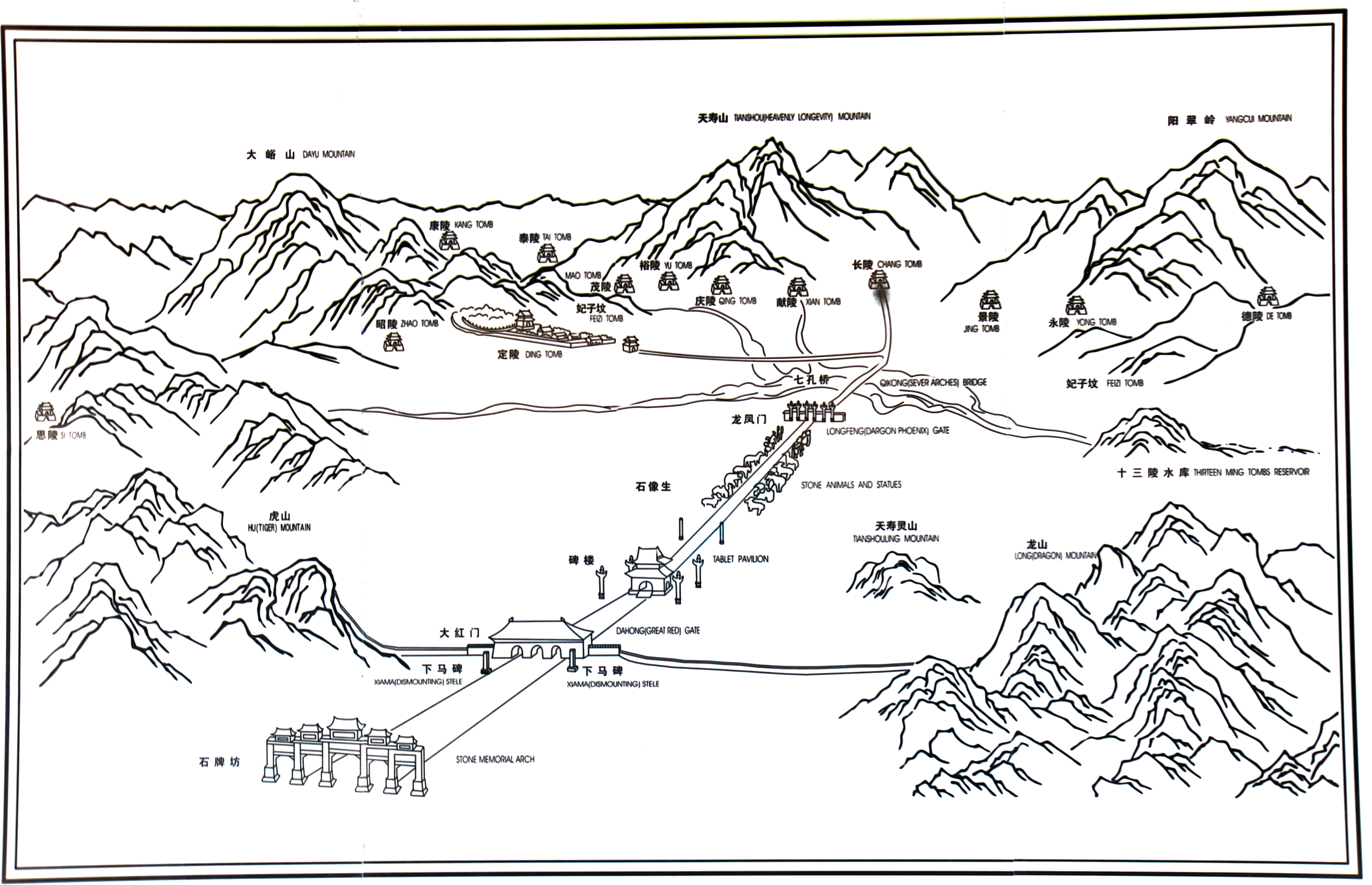
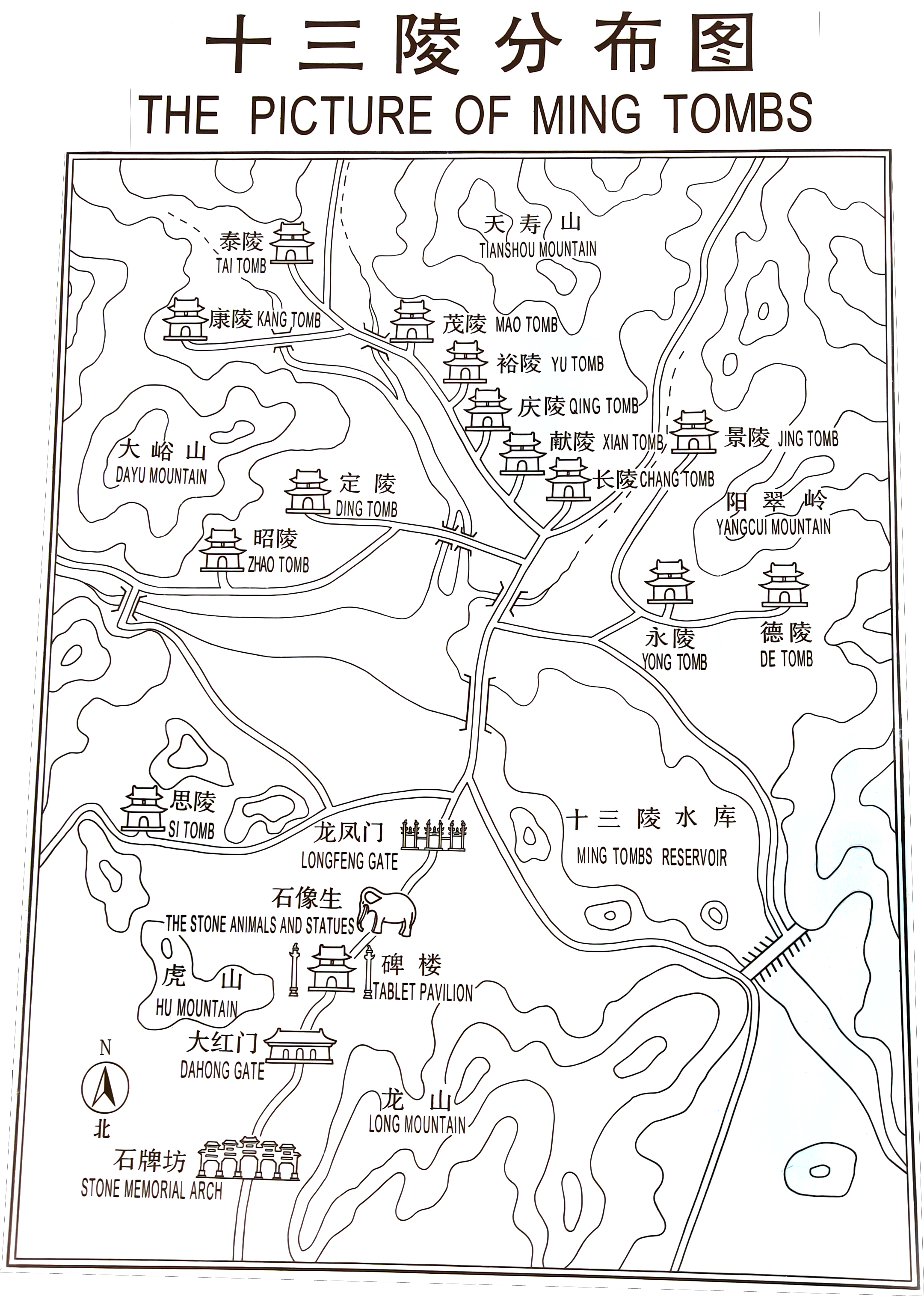
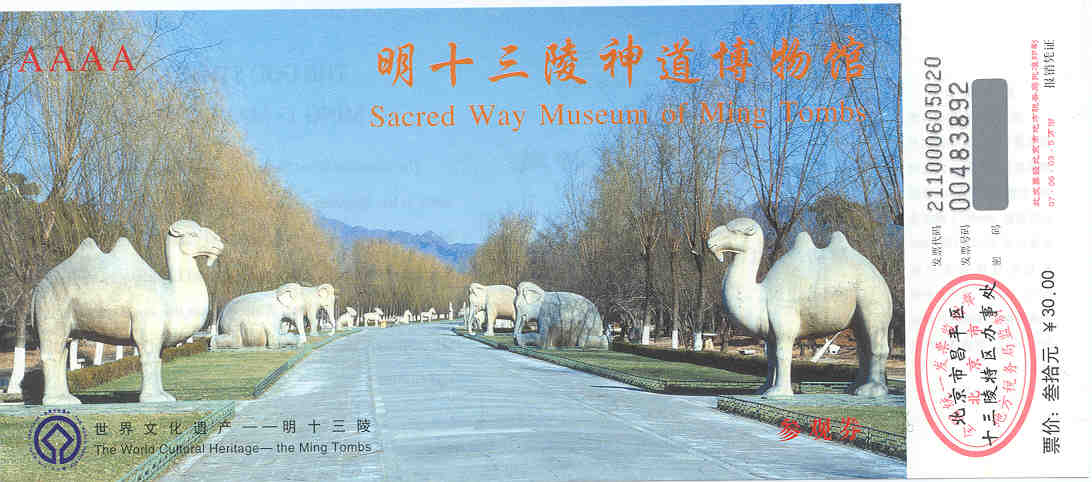
MAIN SACRED WAY OF MING TOMBS
This referes to the ChangLing sacred way. Because all the sacred ways leading to the mausoleums are branches of this one, it is know as the Main Sacred Way, its construction started in 1435 and was extended in 1540.
Stone Memorial Arch, the Big Red Gate (with dismounting tablets on its two sides), the ChangLing Sacred Merits and Lofty Virtues Tablet Pavilion, the stone animals and statues, the Dragon and Phoenix Gate, the Five-Arch Bridge and the Seven-Arch Bridge are north-south diagonal, they look magnificent, of which the most remarkable ones, the ChangLing Sacred Merits and Lofty Virtues Tablet Pavilion, the Dragon and Phoenix Gate, are the main constructions on the sacred way.
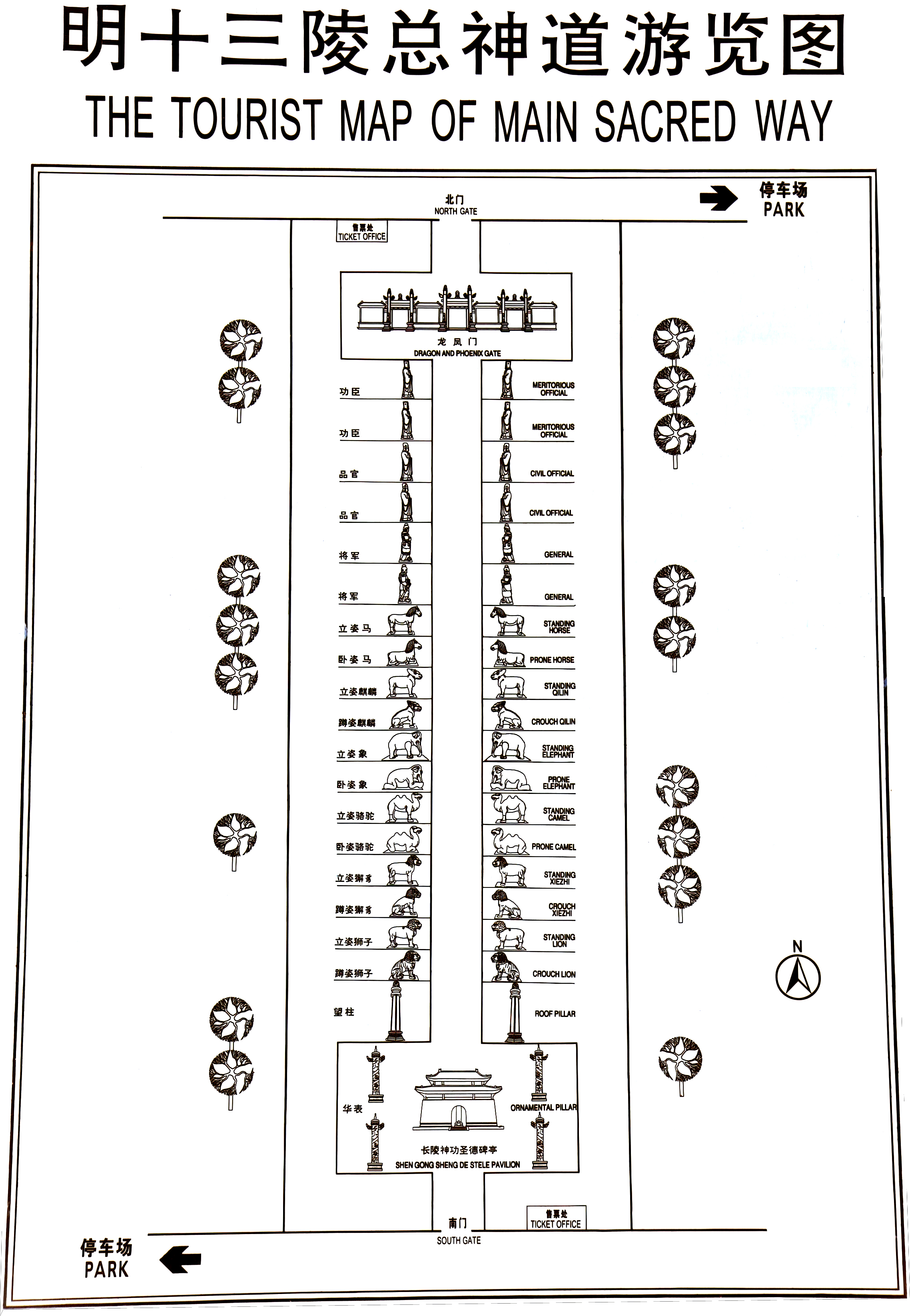
SHENGONG
SHENGDE STELE PAVILION
Built in 1435, the pavilion houses a stele recording sacred merits and lofty virtues, the front side bears an inscription by Zhu Gaochi (1378-1425), emperor Ren Zong of the Ming Dynasty, recording the meritorious achievements of Zhu Di (1360-1424), emperor Yong Le, who was buried in Chang Ling. On the back and sides of the stele, poems written by Qianlong and Jia Qing, emperors of the Qing Dynasty, were engraved.
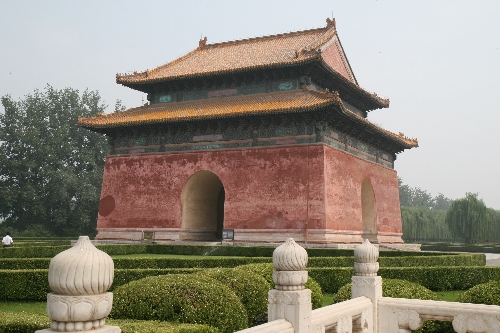 |
|
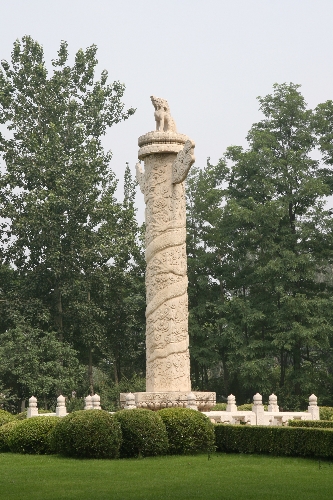 |
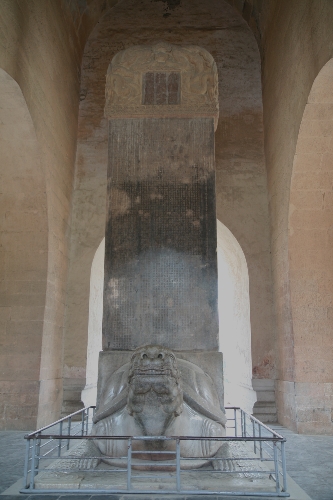 |
THE
STONE ANIMALS AND STATUES
Those stone animals and statues, altogether 36 piecs, were erected in the period of 1436-1438, and were made up from two kinds, beasts and officials from the south to the north. They are lions, Xie Zhi (legendary animals), camels, elephants, chinese unicorns, horses, military officials, civil officials and meritorious ministers. Stone animals and statues erected in front of tombs not only had decorative function, but also stood for the guard of honour when the monarch was alive.
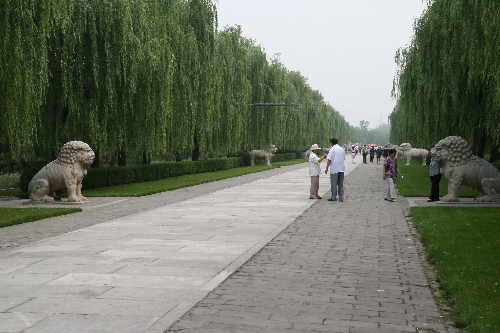 |
|
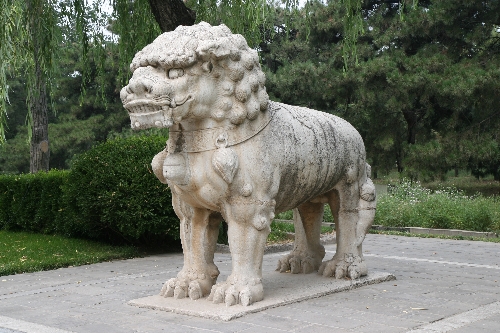 |
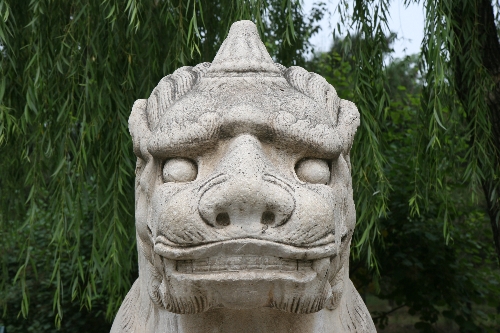 |
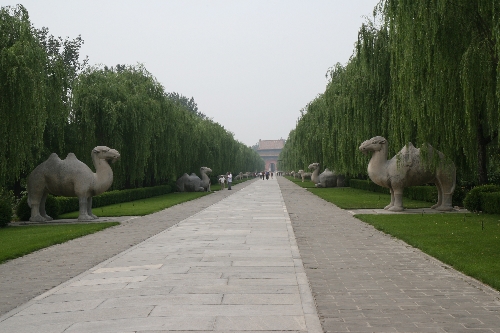 |
|
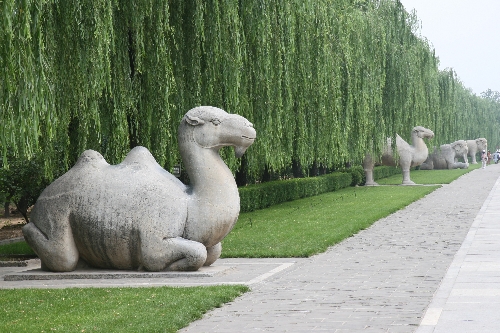 |
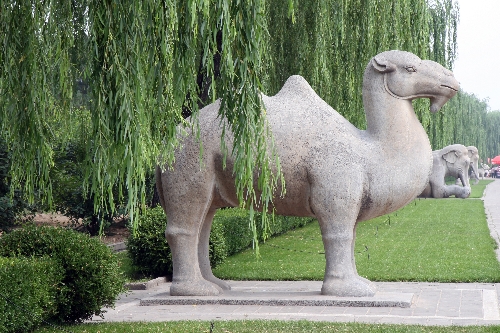 |
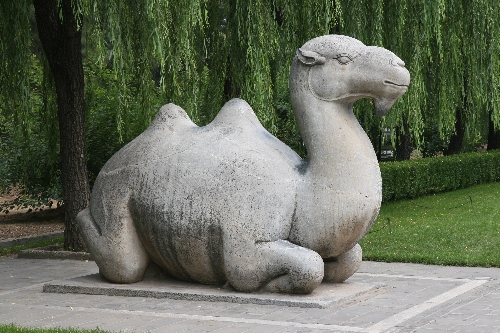 |
|
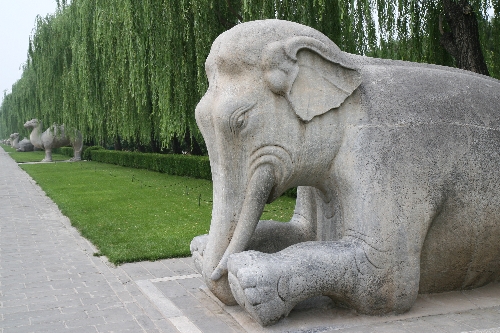 |
|
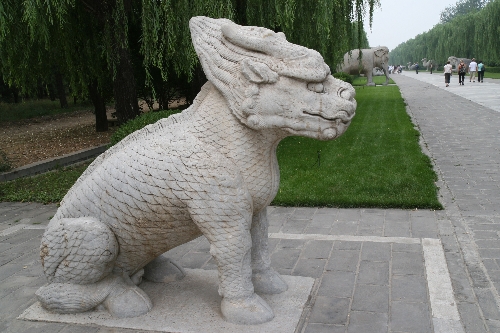 |
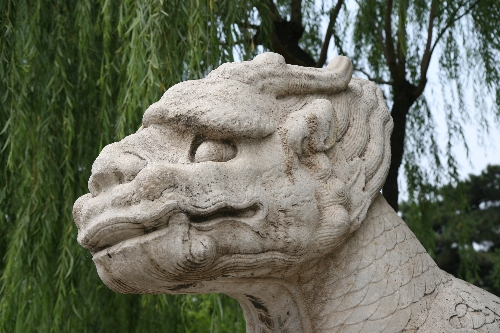 |
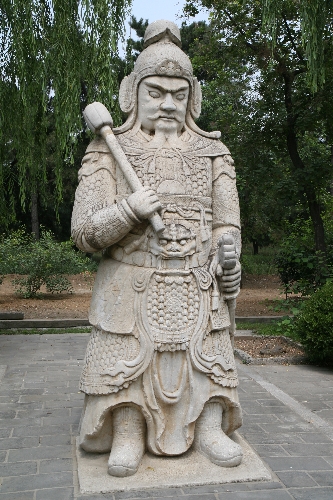 |
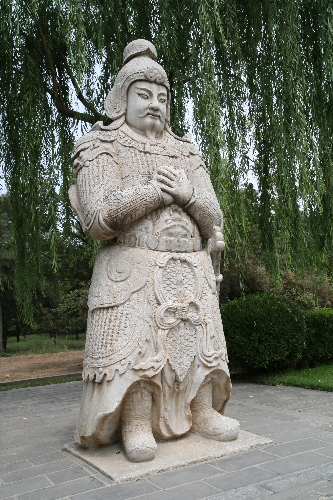 |
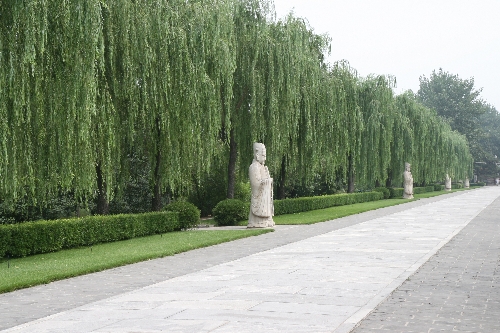 |
|
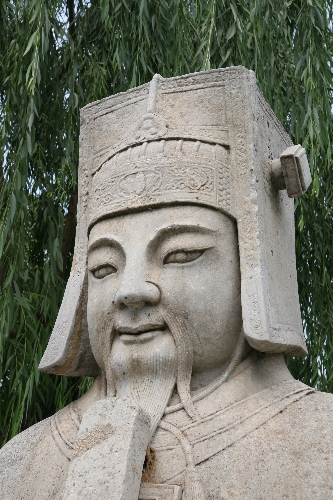 |
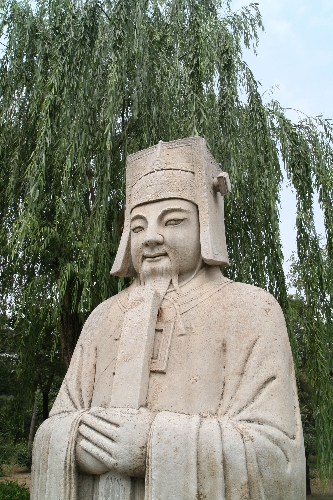 |
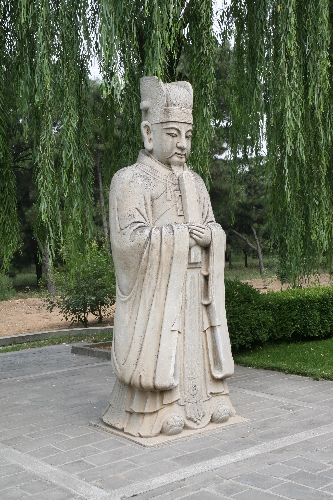 |
|
THE DRAGON AND PHOENIX GATE
In ancient days, this gate symbolized the nobility of the monarchial system.
People always called it the "Gate of Heaven". It is found mostly in the high-level architectural complex such as former imperial palaces, temples and mausoleums to show veneration.
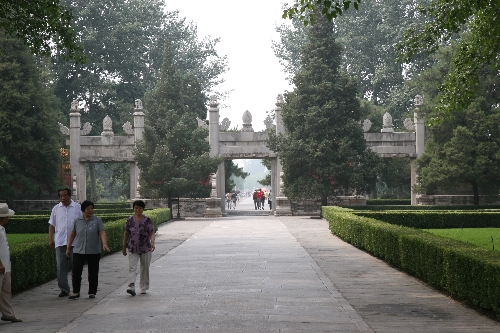 |
|
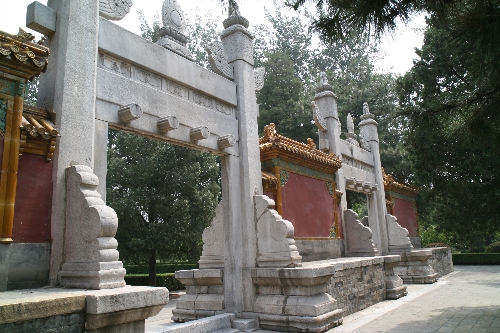 |
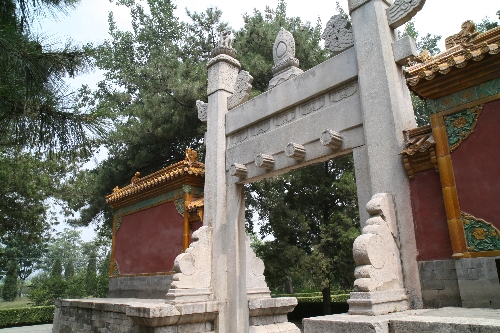 |
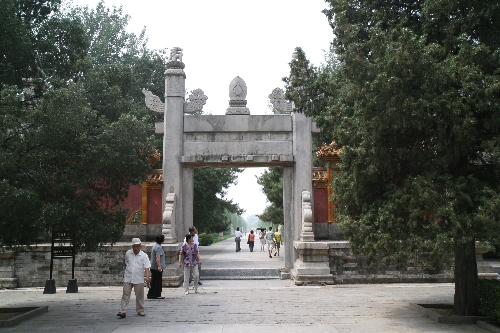 |
|
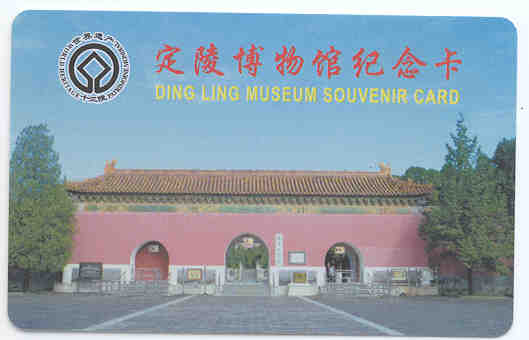
DingLing,
located just east of Mount Dayu, is the mausoleum for the 13th emperor of the
Ming Dynasty ShenZong Zhu Yijun and his two empresses (Xiao
Duan & Xiao Jing).
Zhu Yi Jun ( 1563 - 1620) was enthroned at age ten and reigned for 48 years.
dying at 58. His reign title was Wanli and his posthumous title Shenzong.
Construction of Ding Ling began in Novemher 1584, the 12th year of his reign and
was completed in June 1590. six years later. The complex covers an area of 180
000 square meters.
The
DingLing Underground Palace was the first of the 13 imperial Ming tombs
excavated. With
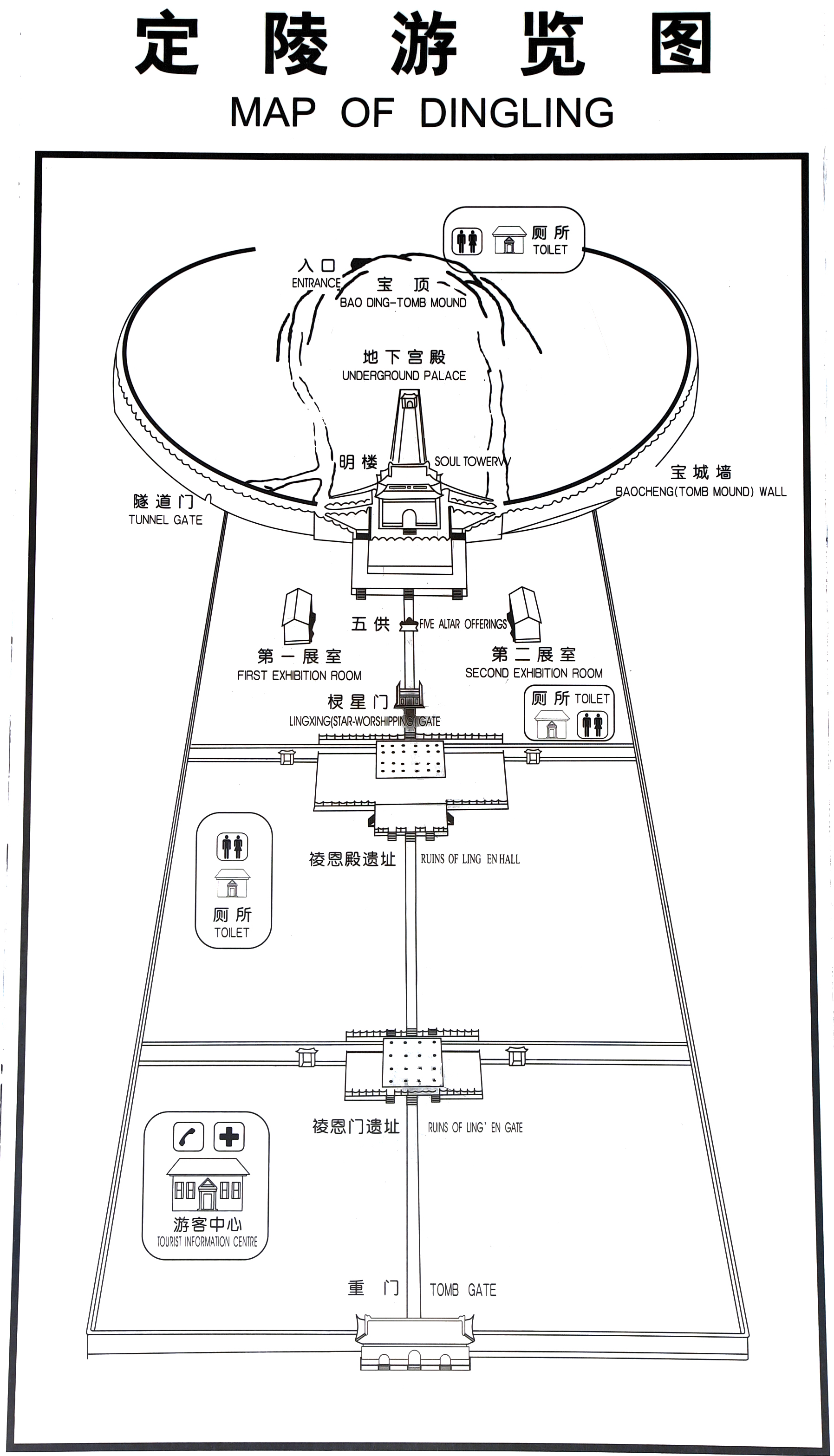
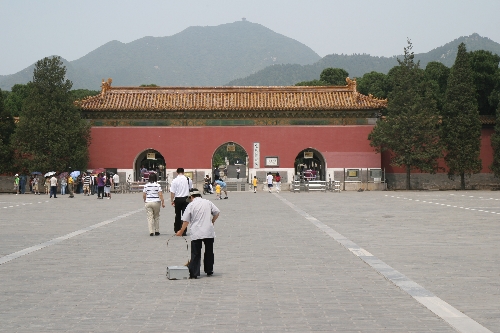
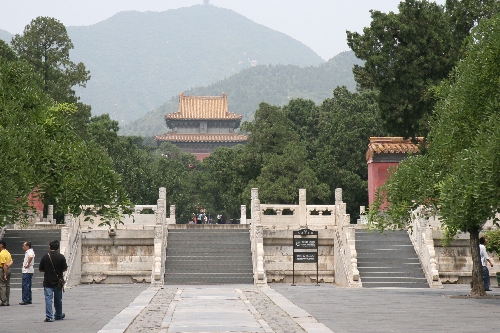
LINGXING MEN
Also called "LINGXING MEN". It is the pailou has different style, the pillar is overrun pailou. In the anciently architecture, it just like the "TIAN MEN" in the sky palace, also the indication of the imperialistic exalted door.
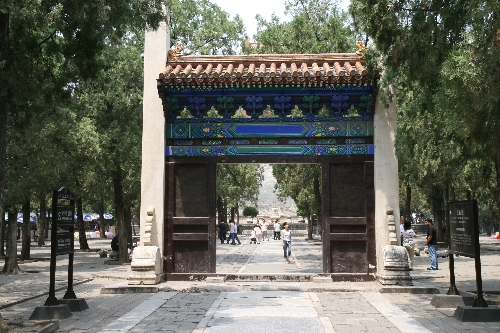
ENTRANCE OF THE UNDERGROUND PALACE
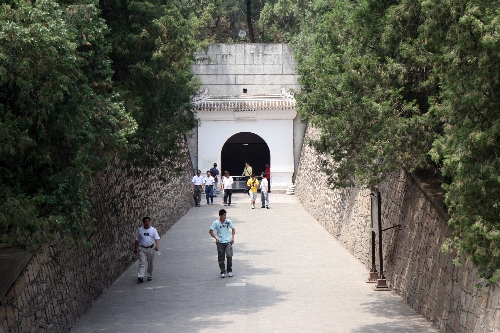
STONE GATE OF THE FRONT CHAMBER
The stone gate in the fron chamber looks entirely the same as those in the middle and reas chambers. The gate frame was carved out of white stone. The leaves of the gate were desinged skillfully. The door slab is thicker at the hinges (40 cm) and becomes thinner towards the opposite side (20 cm). The bottom of the gate axle had the shapte of half sphere. The load of axle was thus reduces and it was easier to open because the friction at the bottom of axle was weakened.
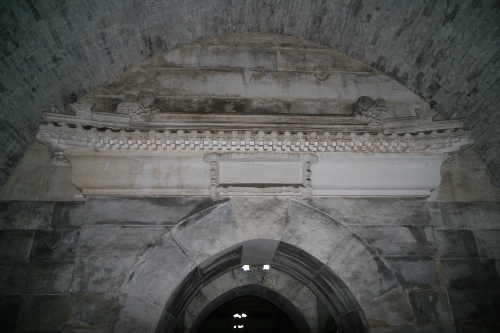
DIAMOND WALL
This is a general term for underground walls in ancient times. This wall lies at the terminal if a stone tunnel, and bears an opening sight towards the central line of the underground palace. After the coffins of the emperor and empresses were carried through the opening, it would be sealed with bricks at the end of the burial. The tunnel was then filled in. At the time of the excavation, the brucks at the opening of the wall caved in a little, owing to the pressure of the earthwork after several hundred years. It was from here that the archaeologists dismantled the wall and entered the tunnel leading to the underground palace.
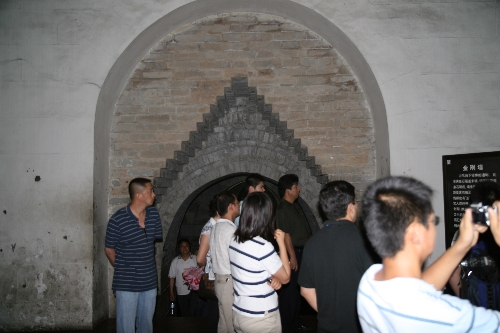
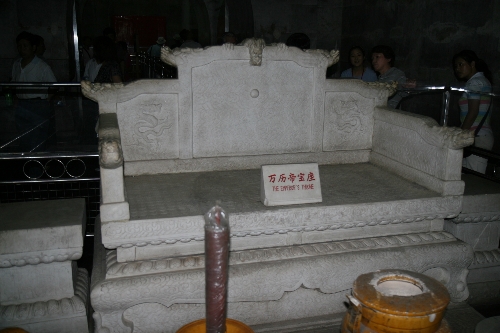 |
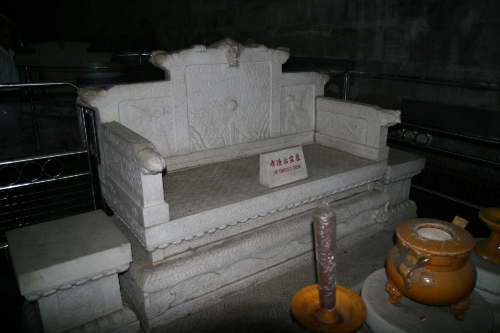 |
| Thron des Kaisers | Thron einer der beiden Kaiserinnen |
THE SOUL TOWER
Built in 1587, the tower is a symbolic structure of the mausoleum. The tower is made of engraved stones which were decorated with colourful paintings. It looks like a wooden structure. A sacred stele was erected inside the tower. At the top of the stele are engraved two characters "Da Ming" which mean Great Ming. The remaining engraved characters on the surface are "The Mausoleum of Emperor Shen Zong".
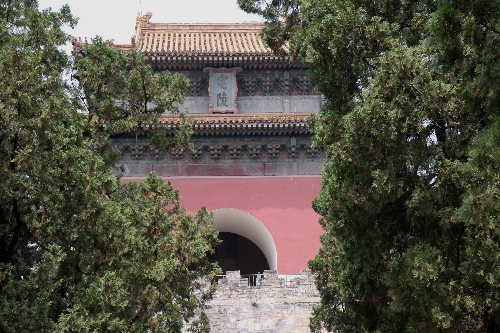 |
|
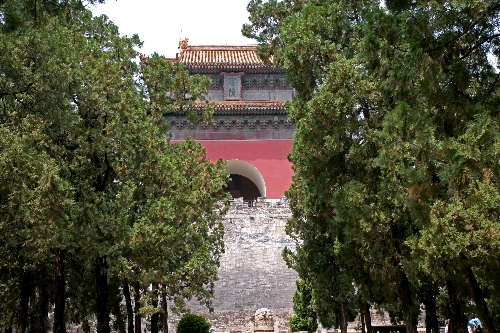 |
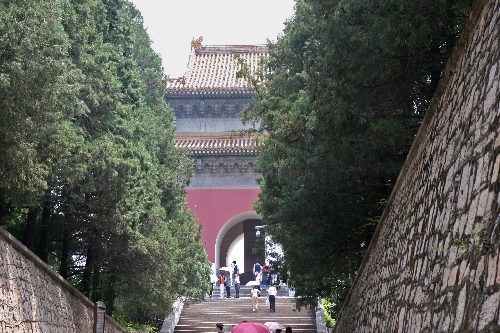 |
OBSTPLANTAGEN BEI DING LING
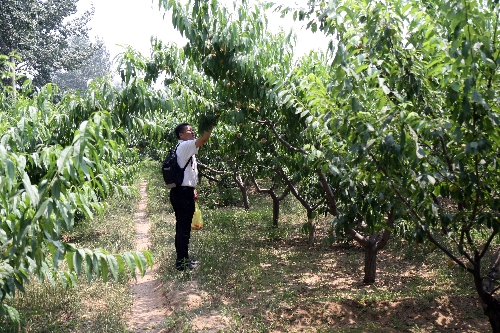 |
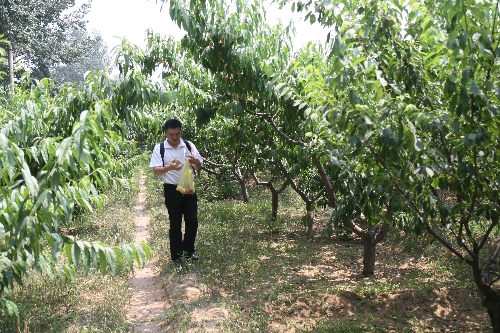 |
| James Liu | |
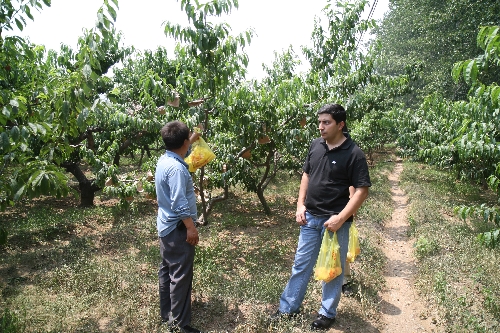 |
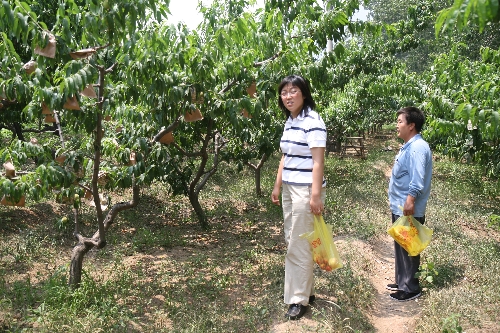 |
| Nikhil Chatturvedi | Winnie Wei |